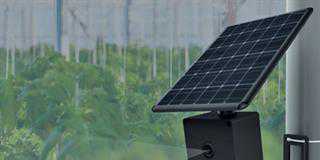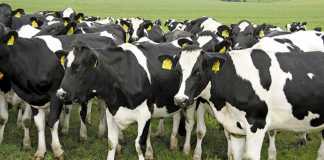
Photo: CSIR
In his opening address at the recent Feedlot Information Day, organised by feedlot services company Octavoscene and animal feed and nutrition manufacturers Chemuniqué, CEO of Red Meat Industry Services (RMIS) Dewald Olivier emphasised the importance of inclusive industry growth.
Olivier said it was equally important that the meat industry took ownership of its own future if it wanted to become a leader in the sustainable production of quality, traceable meat for a growing world population.
RMIS is a not-for-profit company created by the red meat and primary livestock cluster to collaboratively represent the interests of the primary red meat value chain.
“The only way to grow the industry is to grow the entire industry as a collective and inclusively,” he said. He cautioned, however, that these changes should be implemented strategically and based on the four pillars of the industry, namely:
- Animal and public health;
- Inclusive growth;
- Market access;
- Competitiveness and sustainability.
“If we don’t change the way in which we look at our industry, and if we don’t change the way in which we operate, we (producers, feedlots, abattoirs) will die,” he said.
Alternative proteins gaining ground
Olivier said the national consumption of red meat was expected to remain stable over the next two years, given South Africa’s culture of red meat consumption.
“The growing interest in alternative protein sources, such as plant-based meat, is real. As an industry we have to be very wary of their efforts to piggyback on our products and established names.
We mustn’t fight the poultry and pork industries, although they’re competitors. Rather, we have to fight the ‘grass patties’ jointly.”
He said that the following aspects had received much attention over the past couple of months:
- The restructuring of industry coordination, focusing on accountability, transparency and trust;
- Growing a unified voice within the industry;
- Red meat data value chain systems and the integration of data;
- Public-private partnerships and the implementation models for the livestock industry value chain;
- The restructuring and implementation of an identification and traceability system;
- Prioritising foot-and-mouth disease high-risk areas;
- Prioritising animal-handling facilities;
- Integrating South Africa’s co-operative and agribusiness sectors in terms of the focus on the livestock strategy;
- Veterinarian services, especially industry implementation and government oversight regarding animal health, meat safety and a ‘one-health’ system.
Olivier said the industry needed to be the source of the information that went out into the world: “We must create the narrative.”
He concluded by saying that the industry should remember that if it delivered certain services, it was doing this for itself and not for government.
“If we encounter a problem or issue, we must ask ourselves what we will do about it. We must not expect anything from government. It’s our responsibility. We must not give back the responsibility to government.
“Government is an enabler and doesn’t replace the responsibility of the industry. It’s our industry; we have to take control. We need to look at the future and determine what we want to leave behind.”
Animal health in feedlots
Dr Chris Reinhardt of the Zinpro Corporation in Texas, US, highlighted the significance of animal health and the role of zinc supplementation in improving immune function. He said that zinc dwarfed all the other trace elements, as it “protects and defeats viruses and bacteria”.
Reinhardt pointed out that inflammation and diseases in livestock almost always start from damage or injury, and that zinc can help to protect and repair tissue throughout the animal’s body.
“When an animal is hurt or suffers from a disease, it’s important to remember that the zinc requirements will increase under these circumstances.”
In a talk covering the managing of heat stress, Dr Kelly Barnard gave a comprehensive overview of the impact of heat stress and effective management strategies.
She said that a producer could easily lose up to 100 cattle in three to four days due to heat stress in a feedlot.
Barnard also cautioned that not all animals react in the same way to heat stress. Genetics play a role, but an animal’s health, condition, stress level, reproductive stage and place of origin are more indicative of the way in which it will cope with heat.
In short, stress is caused not only by heat or temperature, but by a combination of circumstances.
Heat stress occurs when cattle are exposed to high ambient temperature and relative humidity, resulting in their having to expend energy to get rid of excess body heat in order to maintain the core body temperature.
Heat stress thus occurs when heat gained from the environment and metabolic processes surpasses heat loss by radiation, convection, evaporation and conduction.
“Increased exposure to high temperatures for long periods has detrimental effects on function and the productivity of cattle,” she said.
Heat stress can lead to more stress for the animal, lower milk production in cows, and a higher rate of disease. Temperature and humidity levels determine when cattle start feeling heat-stressed.
Dry matter intake and growth performance are reduced during heat stress due to the redistribution of energy that occurs to regulate body temperature, and this affects feed conversion.
The effects of heat stress include reduced feed intake, reduced weight gain, and death, warned Barnard.
Environmental factors that could contribute to heat stress include:
- Minimal cloud cover;
- Little or no air movement;
- High relative humidity; and
- High temperature.
Barnard pointed out that animals dissipate heat by sweating and respiration. Enhanced respiration rate and panting during heat stress actually accelerate the loss of carbon dioxide, and this can result in the alteration of the blood acidity and lead to respiratory alkalosis.
Heat stress can be detected by recognising breathing rates. This occurs in stages:
- Stage 1: Elevated breathing rate, restlessness and animals spending an increased time standing and not eating;
- Stage 2: Elevated breathing rate, slight drooling and restlessness;
- Stage 3: Elevated breathing rate and excessive drooling or foaming, and animals grouping together;
- Stage 4: Elevated breathing rate, open-mouth breathing, possible drooling and animals standing in a group;
- Stage 5: Elevated breathing with pushing from the flanks, open-mouth breathing with the tongue protruding, and most animals grouping together;
- Stage 6: Open-mouth breathing with tongues protruding; breathing is laboured and respiration rate may decrease, and the heads of the animals are down.
“It doesn’t matter at what stage your animals are, you need to intervene as soon as possible,” she said.
Shade and proper ventilation are crucial to lowering the incidence of heat stress.
“Water intake is critical. Animals should have access to cool and clean drinking water. Make sure you refill the troughs regularly. It’s also important to provide shade for the animals and wet them thoroughly as a corrective measure. The water needs to run off the animals. Wetting the soil is also important as it will cool the soil surface.”
In addition, animals should not be handled during the hottest hours of the day, from 10am to 4pm. It is also unadvisable to work the cattle during the night, as this is the time they dissipate heat.
“If they don’t dissipate enough heat during the night, they won’t be able to handle the heat of the next day. Remove excessive manure, as this can increase humidity,” she said in conclusion.










